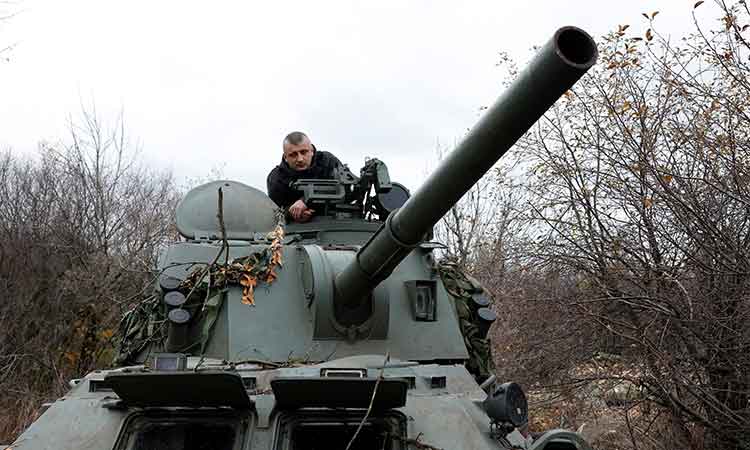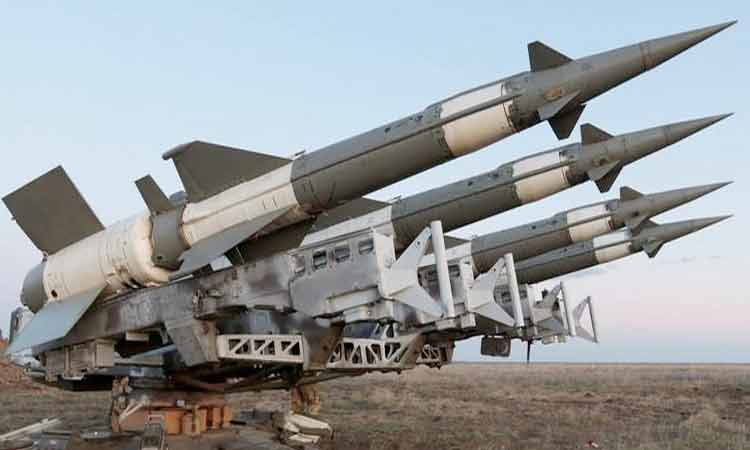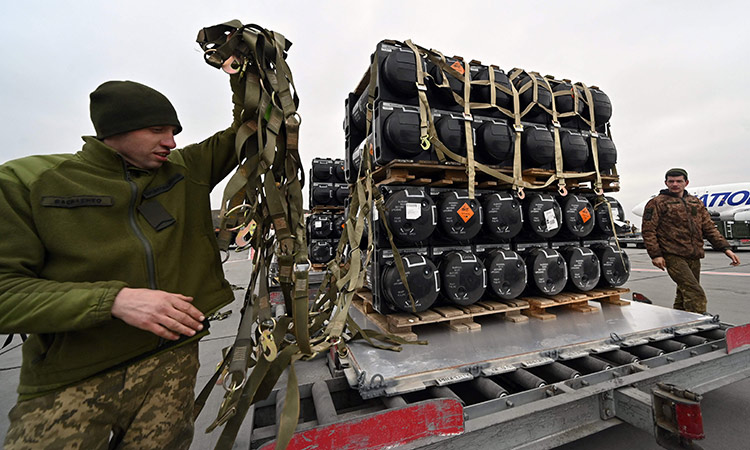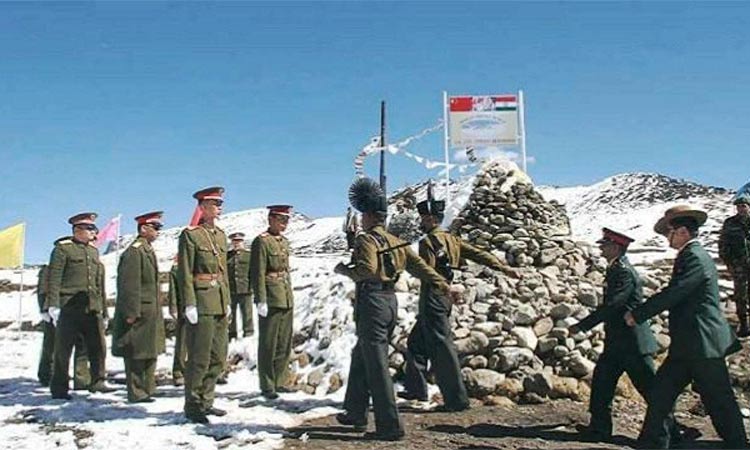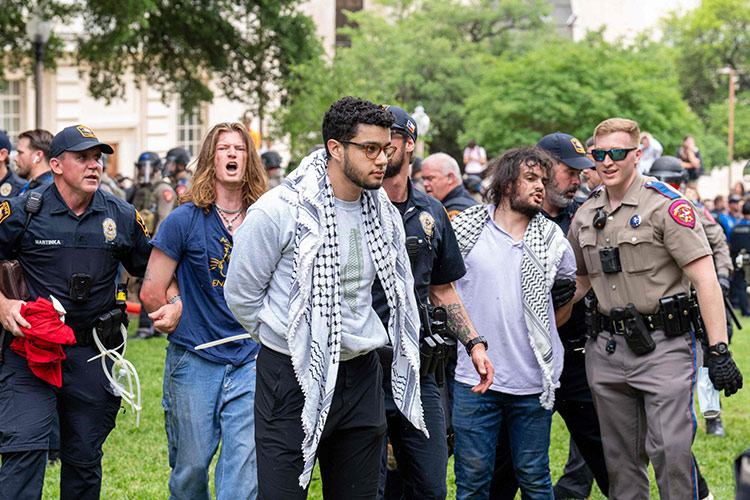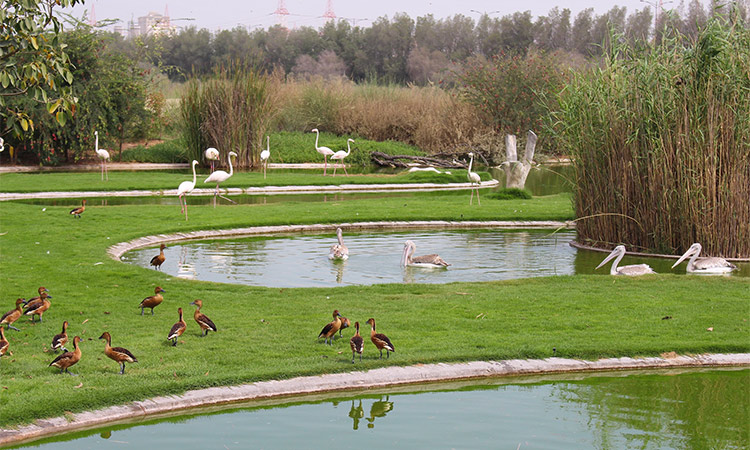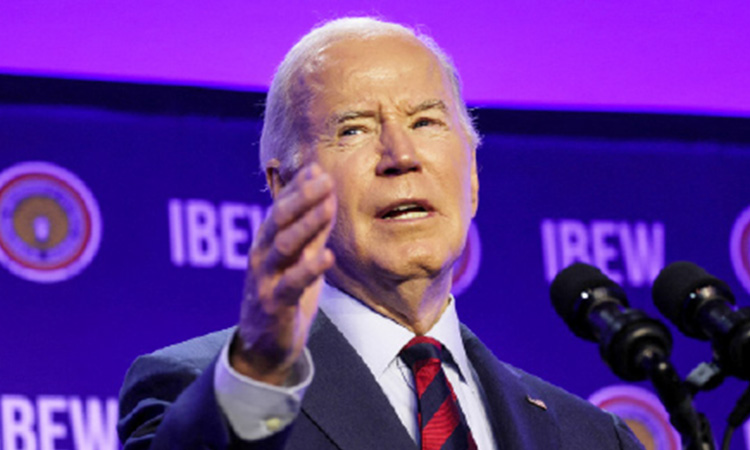West’s arms supplies to Ukraine could rile Russia more

Michael Jansen
The author, a well-respected observer of Middle East affairs, has three books on the Arab-Israeli conflict.
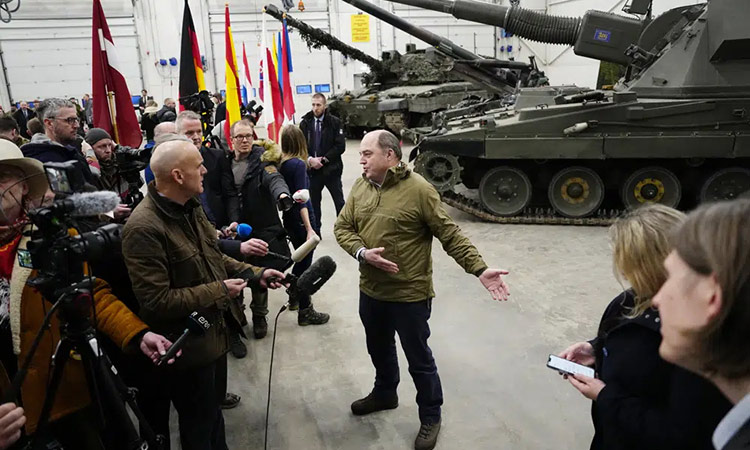
Britain’s Defence Secretary Ben Wallace speaks to the media during his visit to the Tapa Military Camp in Estonia. File/Associated Press
For example, The Washington Post reports that the promised 31 US main battle tanks will be built to Ukraine’s specifications rather than taken from stockpiles. Delivery could be “late this year or next.”
In addition to tanks, Ukraine demands 600-700 infantry fighting vehicles and 500 Howitzers.
These weapons, argued Ukrainian Defence Minister General Valerii Zaluzhnyi, would enable Ukraine to return to the situation on the ground before February 23rd, 2022, before Russia invaded. He is being realistic in the first expectation but unrealistic when he predicted Ukraine would be able to regain Crimea. Russia will never allow this to happen.
The West argues the mix of German, US, British and French tanks on offer are meant to boost Ukraine’s defences ahead of a predicted Russian spring offensive. Some armchair warriors argue that if Ukraine makes advances, Kyiv could dictate peace terms to Russia when the time comes for talks.
This is unlikely. Russian defiance has increased in step with the rising provision of Western arms and imposition of economic pressures.
Wary of becoming more deeply mired in this conflict than already the case, Berlin was rightly reluctant to send to Ukraine Leopard-2 tanks and to authorise European powers supplied with these tanks unless Washington agreed to send M-1 Abrams tanks to Ukraine. The Biden administration wavered, arguing that Abrams tanks require specialised handling and maintenance. Nevertheless, the US and East European NATO members clamoured for Germany to make this commitment and deliver on it.
Under pressure from NATO and the Congressional war camp, the Biden administration agreed.
Once Ukrainian President Volodymyr Zelensky received pledges to provide tanks, he renewed his demand – the word is “demand” — for US fighter jets (F-16s) which had been ruled out until recently.
However, CNN quoted US Deputy National Security Adviser Jon Finer who said the political and military bosses have “not ruled in or out any specific systems,” including the F-16s. The US could supply some of these aircraft and authorise allied buyers of the planes to follow suit.
This would be a boon to countries with 1970s era F-16s. Some seek to replace them with F-35s, the latest toys for militaries around the world. However, the F-16 is hardly a defensive weapon. Flying the aircraft into Russian airspace would amount to NATO-sponsored aggression against Russia, which could result in Russian retaliation and a wider war in Europe. While the US is thousands of kilometres from the theatre of war in Ukraine, Washington’s allies are not and would bear the brunt of Russian strikes. Moscow has also repeatedly warned that tactical nuclear weapons could be used if Russia itself – including annexed Crimea — is attacked.
Last week Ukraine’s credibility was undermined by the exposure of widespread bribery and profiteering by inflating prices for food meant for the military. Zelensky dismissed a top adviser, four deputy ministers, including of defence, and five regional governors. Among the governors fired were those from Kyiv and battle grounds Zaporizhzhia and Kherson. In 2021, Ukraine ranked 122nd of 180 countries on Transparency International’s Corruption Perception Index, zero being least corrupt, 180 most corrupt. Russia was 136th.
In April 2022, US CBS news reported that a large proportion of Western weapons delivered to Ukraine was not reaching frontline military units and concerns were expressed that arms were being sold on the black market. In August, CBS updated its information to say the situation had improved. In December, however, Nigerian President Muhammadu Buhari warned, “Regrettably, the (conflict) in the Sahel and the raging war in Ukraine serve as major sources of weapons and fighters that bolster the ranks of the terrorists in the [Lake Chad] region.” Among the recipients he named was Daesh.
Finnish police reported in November that weapons bound for Ukraine had turned up in that country in the hands of international motorcycle gangs allied to Bandidos CM, which has branches in Ukrainian cities.
Although US and NATO hawks seem determined that Ukraine should “win” this war and cripple Russia permanently, this could be the worst outcome of the conflict. Ukraine has already “lost” the war.
While Moscow is following Russia’s traditional strategy of throwing thousands of troops into battle, Ukrainian civilians are on the front lines. Both sides are sustaining heavy fatalities and injuries.
The Ukrainian civilian death toll is estimated by the government at 33-41,000. People are fleeing homes and country. The population of Ukraine before the war was 39.7 million. In January 2023, around eight million Ukrainians were reported to be refugees in Europe while 6.5 million are internally displaced. Another 2.9 million are said to be in Russia. The country’s cities, infrastructure, manufacturing plant, countryside, farms, and cultural centres are being destroyed by Russian tanks, bombs, drones and rockets.
Russia’s economy is facing disruptions from the loss of revenue from oil, gas, fertiliser.
Precious metals and other exports, freezing of $400-500 billion deposits in foreign banks and disruption of access to international banking. But Russia’s losses are nowhere as devastating as those of Ukraine.
The best outcome would be “no winner, no vanquished.” Therefore, the West must arm Ukraine for defence without arming Ukraine for offence. On the ground, the only solution is the status quo ante, leaving Russia in control of the eastern Donbas and Crimea. These are territories which have been Russian possessions or peopled by Russians for centuries. Zelensky’s vow to liberate all Ukrainian territory is over the top and would simply provoke Russia to rearm and wage forever war on Ukraine.
This is a war that never should have been waged, a war that could have been avoided if the West had halted NATO’s eastwards advance into Eastern Europe and ceased its pressure on Ukraine to join the alliance. For Moscow, this has been a casus belli since the disintegration of the Soviet Union between 1989-91. Western leaders were deaf to Russia’s warnings. Now Ukraine is facing the storm unleashed by Russia nearly a year ago.
